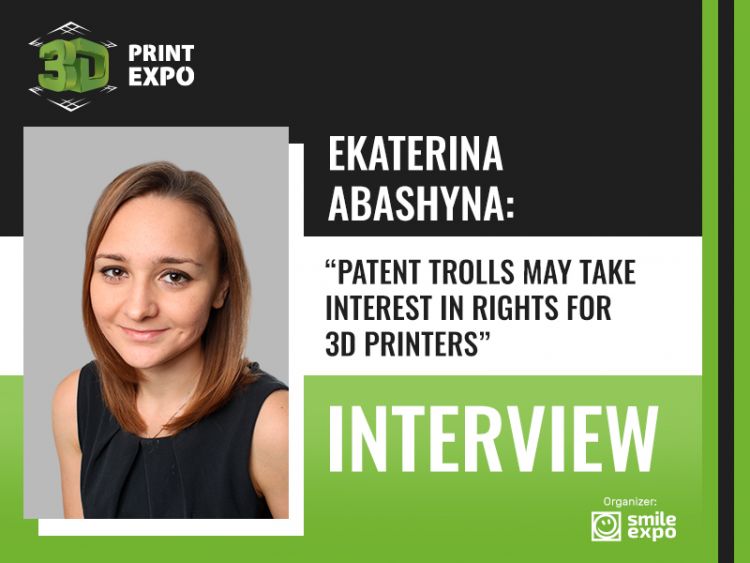Which sculptures can be 3D printed? Interview with a media lawyer Ekaterina Abashyna

Any copying of an object and its usage for commercial purposes inevitably cause disputes over copyright. The mankind already faced this problem in the era of magnet tapes followed by the Internet boom with the war between human rights activists and pirates. We now stand on the brink of the 3D printing era. Can an owner of a 3D printed copy of a Michelangelo’s sculpture be accused of the copyright infringement? How to manufacture your own 3D printing device not infringing a patent? To find answers to these questions, read the interview of the 3D Print Expo press service with a media lawyer and expert at the Digital Rights Center Ekaterina Abashyna.
Interviewer: 3D Print Expo (3DP).
Respondent: Ekaterina Abashyna (Е.А.).
3DP: Ekaterina, please describe the procedure of patent receipt in the additive technologies sphere? What is subject to patenting, what is not?
All the patents in the sphere of 3D printing are granted in accordance with general laws for inventions, utility models, and industrial designs patenting applicable in Russia. They are also applicable to copyright. However, it doesn’t cover the items listed in paragraph 5 of the Article 1259 of the Russian Civil Code (The Objects of Copyrights). Therefore, ideas, concepts, solutions to technical, organizational and other tasks cannot be patented.
A subject of patent should have the following properties: novelty, innovation, and industrial applicability. By the way, the principal properties of an industrial pattern should be both new and original.
3DP: We looked through the U.S. statistics for 2017 in the sphere of 3D technologies. The majority of patents was issued for the large companies that are not engaged in this sphere: General Electric, Xerox, Boeing. In your opinion, what is the reason? Are there any signs of the companies’ intention to embrace the 3D printing market?
Е.А.: In my opinion, the general tendency witnesses that the large companies have more resources and tend to protect their products. The point is more likely to lie in possibilities, not ambitions.
3DP: The U.S. Army is getting ready with 3D printed concrete buildings. Recently, it received a patent on new printing compounds. Is patenting commonplace for a state? Do you know any other examples?
Е.А.: Unfortunately, I cannot provide other examples.
3DP: Are there any examples of dealing with patent trolls (patent owners with no own products that use their right to gain illegal profit entering a legal battle with manufacturers) in the 3D printing sphere?
Е.А.: There aren’t any cases of patent trolls in 3D printing. But I think that the worthiest idea for them is industrial patterns of printers. It’s not hard to get and buy a patent on them.
3DP: How about the 3D models recreation of works of art (sculptures, designer interior items)? Does it violate copyright?
Е.А.: To detect the copyright violations, the following should be taken into account:
- whether an author is alive, if not, check the time passed since the death;
- aims and application of a work of art (profit; education; personal use);
- whether an owner’s consent is needed and whether it was given.
Even if you don’t print anything using a 3D printer, some problems with the law may occur. For example, scanning a sculpture and publishing a file on the Web can also be subject to copyright.
I can provide several examples in terms of printing. Say, a sculptor is safe and sound, but you decide to print out and sell a couple of his works without his or her written consent. This will definitely violate copyright. If an author files a lawsuit against you, be ready to pay money compensation to a copyright holder.
However, the exceptional sculptures of Michelangelo have become public ownership that you can freely use. If only you aren’t embarking on a journey to the Renaissance grabbing a 3D printer or scanner.
Ekaterina Abashyna will tell in detail about intellectual rights in 3D printing within the lecture zone of 3D Print Expo.
Registration







